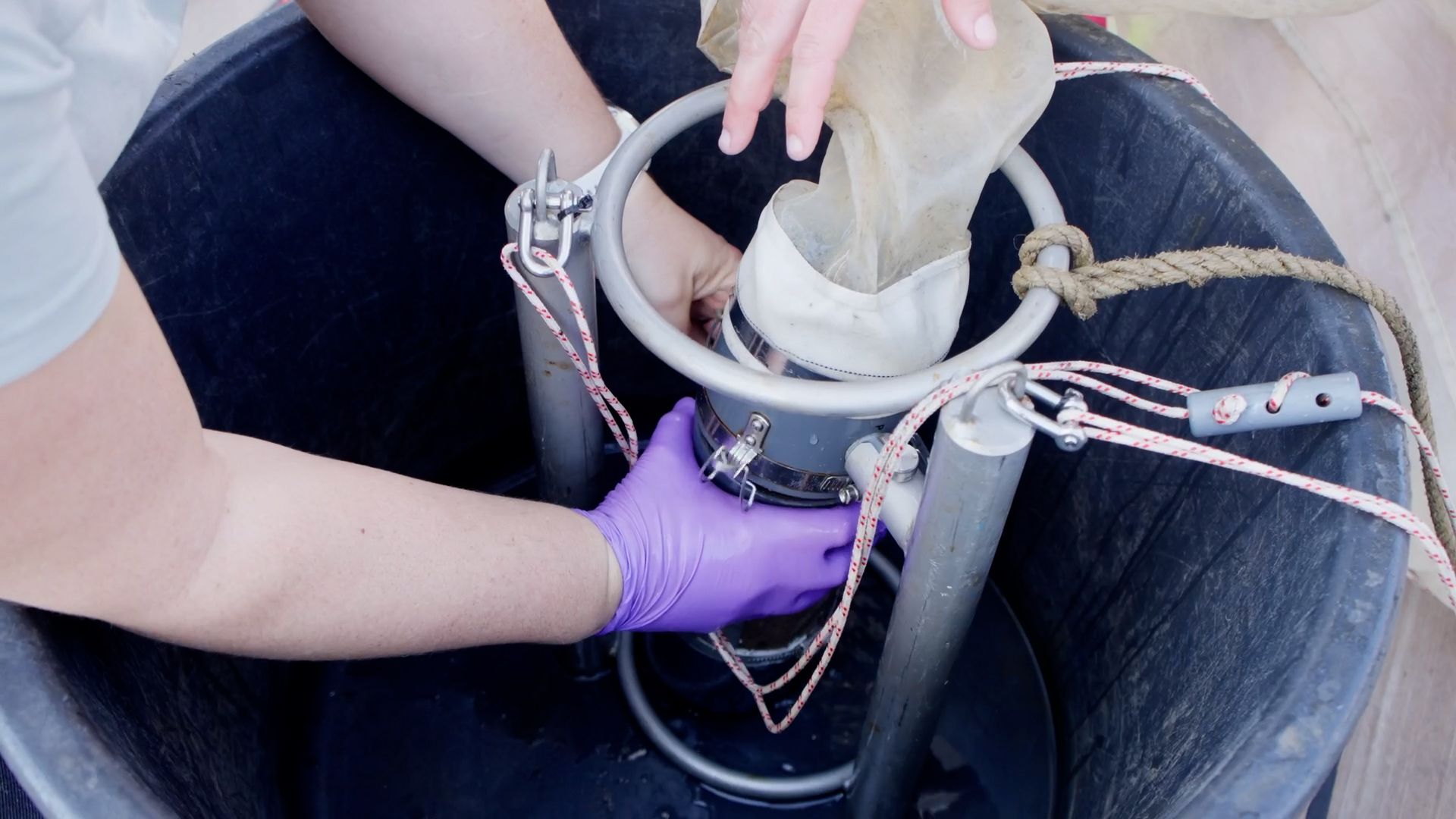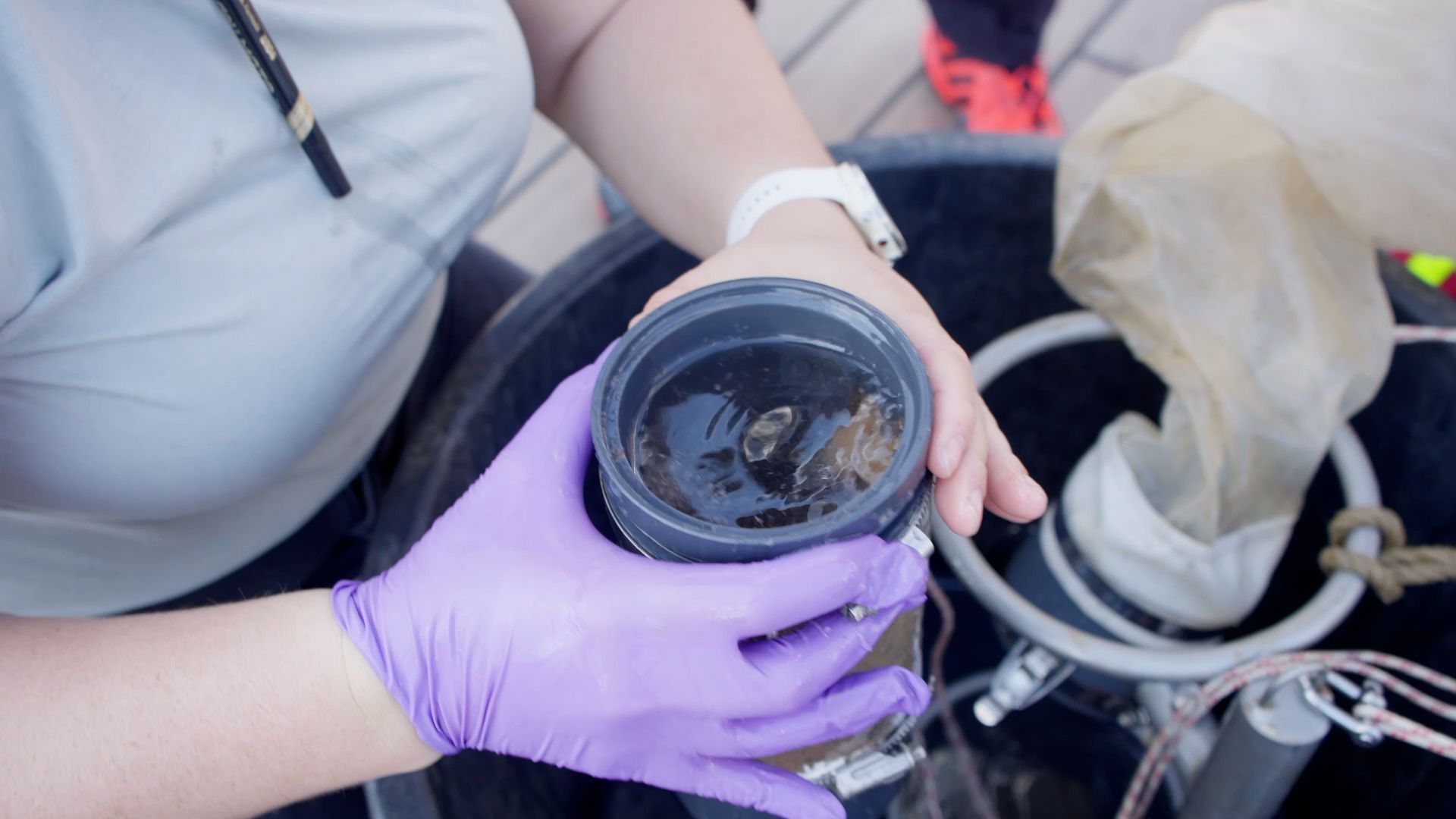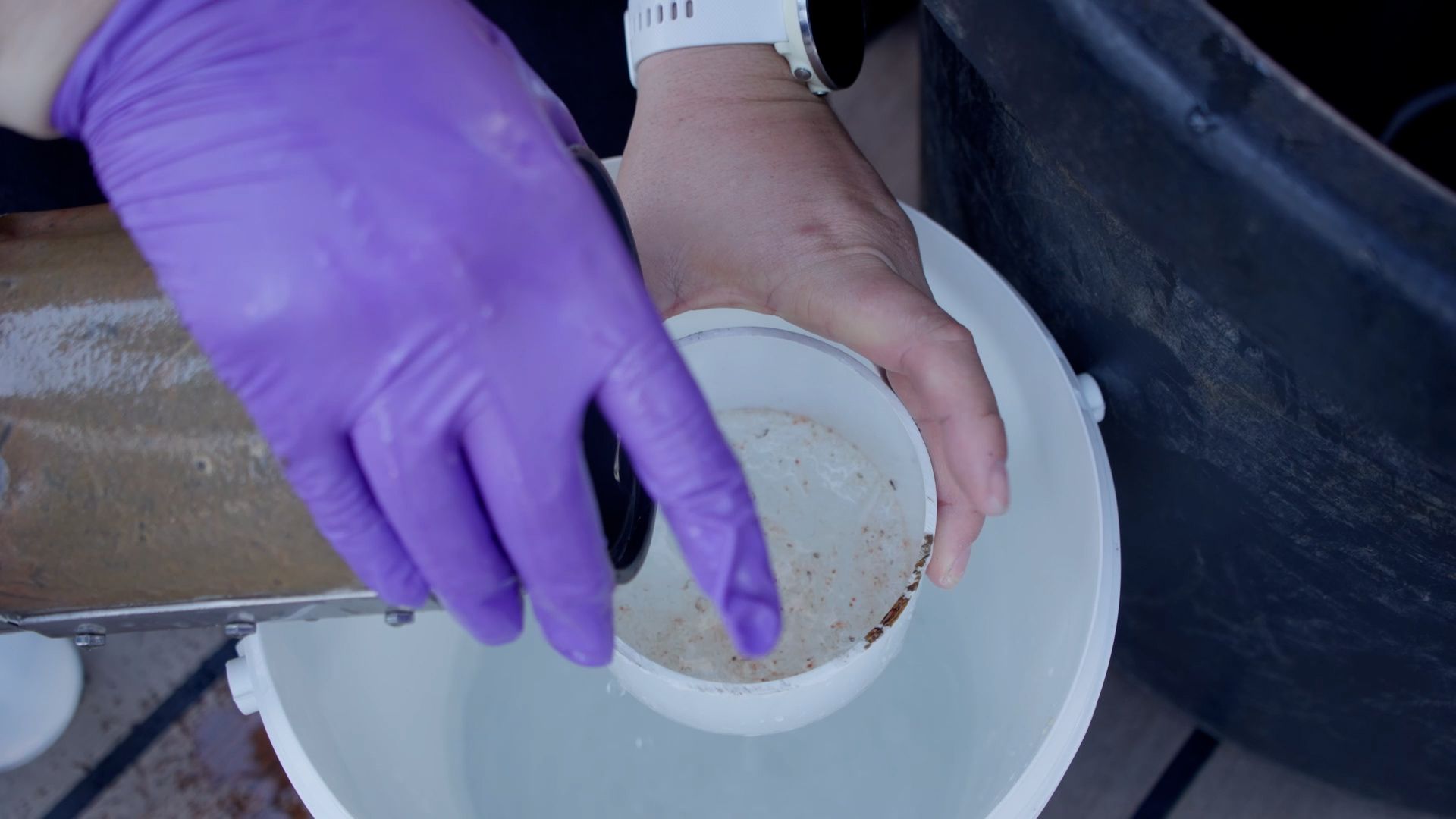The researchers on board Statsraad Lehmkuhl have a wide variety of tools. The "Bongo-net" is a piece of scientific gear that is used in sampling tiny organisms living in the upper layers of the ocean.
The scientific name of the Bongo-net is WP2, but it looks a bit like a bongo drum, with a large round opening to which a long sausage-shaped net is attached.
– It was called Bongo-net during a quiz we had on board, and the nickname "Bongo" has stuck, says Eva Garrido. She is a PhD student at the University of Tromsø, and is using the net in her work on zooplankton system dynamics.

Zooplankton are tiny animals that drift in the ocean. The word comes from Greek: zoo meaning "animal" and plankton meaning "drifter". Unlike phytoplankton, which are tiny plants, zooplankton cannot make their own food. So they eat other organisms, usually phytoplankton but also other zooplankton.

Vertically in the sea
The net is used during the research stops when the ship is stationary.
– We are not towing it on the surface like the Manta-trawl, Eva says. The goal is to sample the upper part of the water column, but in a vertical way, she explains. This method provides a snapshot of what organisms are living in the top 200 meters.

This depth range is chosen deliberately, this is where the zooplankton lives, at least most of the time.
– They do what we call vertical migrations. They go deep during the day to avoid being seen by predators during daylight hours, and ascend to the surface during the night, Eva explains.
She is studying copepods in particular, a group of zooplankton that form the foundation of the marine food web in the North Atlantic. Copepods not only support fish populations but are also highly responsive to environmental change.
– I’m studying a species named "Calanus finmarchicus", which is the most abundant in the North Atlantic and really important for fisheries, Eva says.

In alcohol
To capture them effectively, the Bongo-net used has a mesh size of 180 microns, ideal for filtering out the zooplankton while letting smaller particles pass through. The sampling is also coordinated with other equipment like the CTD which records the physical properties of the water, allowing researchers to correlate biological samples with environmental conditions.
Below are images taken when the contents of the Bongo-net is collected. The small red dots are zooplankton. All Photos: Matteo Baratella.
Once the plankton samples are brought aboard, Eva preserves them in alcohol for later laboratory analysis.
– Look into the microscope and identify different species and different groups, and then look at the community composition as a whole, Eva explains. Which species were there and at which time and how this relates to the different water masses that we observe.

Researchers are especially interested in how community structures change in response to physical ocean features like eddies and fronts. These dynamics offer clues to how organisms adapt to varying environments and help predict how future changes, like ocean warming, might affect marine ecosystems.
Gets smaller
Some samples are also used for genetic analysis. The researchers are interested in how the phytoplankton community relates to the whole plankton community.

Even at this early stage, interesting patterns are emerging.
– So far we have seen that the copepod sizes decrease when we go from north to south, Eva says. The copepods were much larger in the north part of the Atlantic, north of Iceland we encountered some truly Arctic species, Eva says.
Further south the sampling revealed smaller but more numerous individuals, important information when it comes to taking care of the ocean.
– When we do science, we provide knowledge which could be used in different ways. There is people that will maybe try to make money out of it, and there is lots of people that will try to preserve it. To have more marine protected areas. This type of studies helps to better understand the ecosystem dynamics and to better predict how they will do in the future, Eva concludes.









